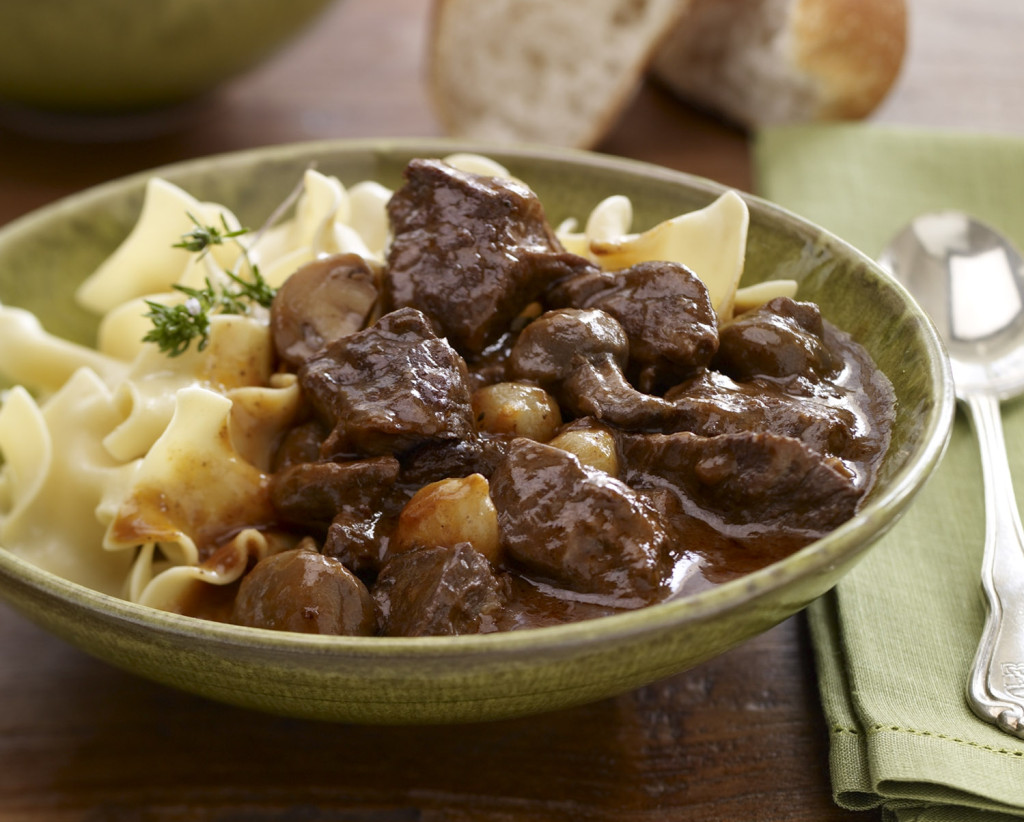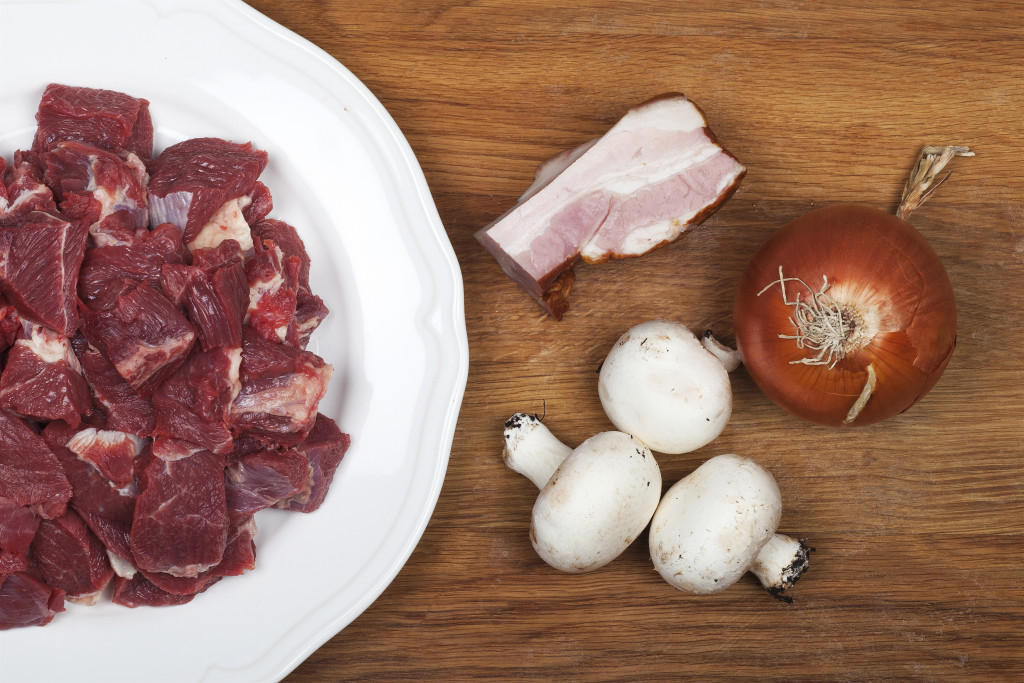When venerated chef, cookbook author, and TV celebrity, Julia Child, launched her groundbreaking televised cooking show “The French Chef” in 1962, she chose for her first recipe on her first show a classic peasant stew of beef, mushrooms, onions, and red wine: Boeuf Bourguignon.

Like many time-honored recipes, there is the classic preparation and myriad variations for this beef stew, known in this country as Beef Burgundy. The basic technique for making Boeuf Bourguignon can be used for a variety of other stews, including another French classic: Coq au Vin (chicken cooked in wine, usually white wine this time).
Julia captured her estimation of the importance of Boeuf Bourguignon in the pantheon of French cuisine when she said the stew is “certainly one of the most delicious beef dishes concocted by man.”
Doyenne of French cuisine in the U.S., Julia demystified the many mysteries of French cooking, teaching recipes and incorporating fundamental cooking techniques to bring it all within the grasp of the average home cook. Her egalitarian approach and pervasive influence is not unlike Martha Stewart’s impact on spreading elegance, panache, and good taste to everyone and anyone who aspires to it.
The recipe Julia demonstrates is adapted for TV and leaves out several steps. For example, Julia uses a combination of olive oil and butter which are perfectly acceptable substitutes from the original recipe that calls for rendering lardons of bacon, and then browning the beef in the rendered bacon fat. And although on-air Julia mentions the use of tomato paste, thyme, bay leaf, and other ingredients, they are not shown on screen.
Watch Julia making this recipe on the premiere episode of “The French Chef.”
But, it didn’t start with Julia.
Origins and Evolution
Boeuf Bourguignon has a long but uncertain history, some say, dating back to the Middle Ages. The recipe follows the age-old traditions of stewing and braising—that is, moist heat cooking that renders inexpensive, tough cuts of meat and poultry moist, tender, flavorful, and aromatic through long hours of slow cooking on the stovetop or in the oven.
From its peasant origins, the standard recipe evolved with modern variations, adding or changing ingredients which have elevated the dish’s status to that of haute cuisine and the go-to dish for entertaining in the 1960s.
For example the original recipe does not call for tomato paste. Although tomatoes can be traced to 500 B.C. in Mexico, it wasn’t until after Columbus’ explorations that tomatoes were introduced to Europe. They were then largely rejected as a food source until around 1880 (when the Venetians invented pizza) because they were thought to be poisonous, being labeled “poison apple.”
Cooking Hints
- When preparing the pearl onions, an easy way to remove their skins is to blanch them for about a minute in simmering water. First, score the root end of each onion with an “X.” This will help the onion keep its shape and its layers intact during the cooking process. When you remove the onions from the water, put them in a colander and rinse under cold water to stop the cooking process. Once cool enough to handle, squeeze the onion from the root and the skin will easily slip away.
- Lardons are small, matchstick-sized pieces of bacon. To make them, lay a strip of bacon on a cutting surface and cross-cut at 1/4-inch intervals.
Recipes

The first documented recipe of Boeuf Bourguignon was the work of iconic master chef and father of modern French cuisine, Auguste Escoffier, appearing in his 1903 classic Le Guide Culinaire. Escoffier’s recipe for Pièce de Bœuf a la Bourguignonne recipe differs in a significant way: It calls for one large piece of beef, as opposed to chunks of beef which have become the standard in modern adaptations.
Here is a link to Julia’s original recipe as published in her seminal volume, Mastering the Art of French Cooking, published in 1961.
Wikipedia’s entry for Bouef Bourguignon includes an adaptation of Julia’s original recipe, as well as a simplified version.
Also, the Lobels have developed a simplified and streamlined version for Beef Burgundy which substitutes canned mushrooms and pearl onions for fresh.
Each of the recipes represents varying levels of difficulty and may appear daunting because of the length of the instructions. So choose the one with which you are most comfortable. But even at its most labor-intensive, try making it once or twice, and you’ll most likely be able to make it from memory and adapt it to lamb, pork, or poultry in the future.
Have you ever had or made Boeuf Bourguignon? Have you ever explored such other types of beef stew as Carbonnade de Boeuf (beef cooked in beer) or Brunswick stew? What are your favorite ingredients to put into the stew pot?



Leave Your Response